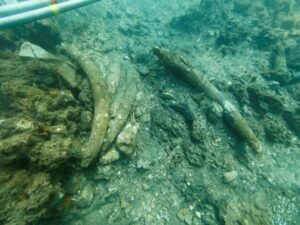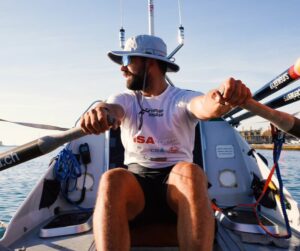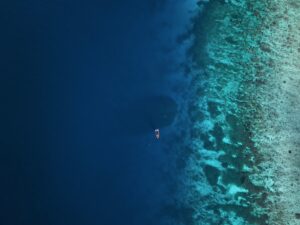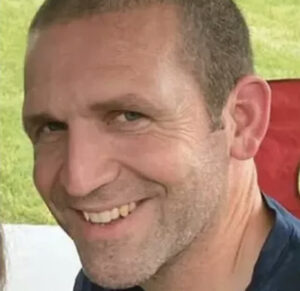In the world of ocean adventure, kayaking is not the norm, especially for long-distance crossings. With only a handful of long-distance kayakers, advice and expertise are hard to come by. Richard Kohler, 53, did not see this as an issue when he embarked on what would become one of the longest ocean crossings by kayak.

Photo: Richard Kohler
The second-longest solo ocean kayak journey
Kohler paddled 6,403km solo and unsupported from Cape Town, South Africa across the Southern Atlantic Ocean to Salvador, Brazil. It is the second-longest recorded solo ocean kayak journey. The late Aleksander Doba completed the longest journey when he paddled 6,558km from Portugal to Florida in 2014.
Kohler may also be the first person to cover this particular route in a kayak. Amyr Klink rowed a similar route in 1982; Klink also crossed the Southern Atlantic Ocean to Brazil but started his journey in Namibia rather than South Africa.
Kohler has decades of experience as a sailor and has completed 11 ocean crossings as a professional yachtsman. But he had always dreamed of completing a solo crossing. After kayaking the South African coastline alone in 2013, he came up with the idea of solo ocean crossing by kayak.

Kohler’s route. Image: Richard Kohler
Success on his second attempt
He first attempted the crossing in December 2021 but abandoned his attempt after 16 days. The wiring to his main solar panels corroded, and his spare set of panels didn’t work. Unable to use his communication devices, AIS system, or desalinator, he had to make landfall in Namibia.
In a twist of fate, the unfortunate ending of his journey allowed him to do something he would otherwise have missed. He was able to make it back to South Africa to say goodbye to his father, who had fallen ill.
Over the next year, Kohler made adjustments to his boat and equipment. His kayak is very unusual. In fact, it barely resembles one at all. Named Osiyeza, it was built for this crossing. It is eight meters long, one meter wide, and includes an enclosed sleeping area.
Paddling purists might question whether this should be classed as a kayak at all. They might point to Ed Gillet’s crossing of the Pacific as a true ocean kayaking expedition, but Kohler is not phased by the debate. In a radio interview before setting out he explained his view: “The term kayak is because I am using a double-bladed paddle to propel myself.”

Richard Kohler. Photo:Richard Kohler
Gale-force winds and seasickness
Regardless of how high-tech his kayak is, you can’t question the skill needed to make the crossing.
The 63-day, seven-hour journey was extremely challenging. For the first 48 hours, Kohler’s seasickness was so bad that he couldn’t eat. Over the next three weeks, he endured gale-force winds and storms that forced him onto his sea anchor several times. Eventually, he was able to escape the horrific conditions and position himself with the trade winds behind him.

Photo: Richard Kohler
He faced storms with 40-knot winds and five-meter swells. He had no choice but to sit these out, listening to the waves smashing into his boat.
“The problem with being on a kayak is you are so slow you cannot escape the weather. So you are sitting there for a week just watching this thing approach, and that can do some funny things to your mind,” he said.
His daily routine
Over two months at sea, Kohler settled into a routine. He would paddle for two to three hours before dawn and then stop for a coffee, some breakfast, and a chat with his shore team. Then he would paddle three hours on, one hour off for the rest of the day.
At midday, he usually stopped for two hours to get out of the sun, rest, send a message to his wife, update his blog, and eat a bit more food. He tried to paddle for 10 to 15 hours each day.
For Kohler, the mental battle proved harder than the physical. Two months is a long time to spend alone. It hit particularly hard over Christmas. His wife had packed four small presents for him to open, and he spoke to her and his mother. But once the calls were over, he began to feel a little low.
Kohler had packed some letters from friends, sealed for him to open when he needed a little encouragement. He picked out two to open. The first was from his father, written before he died for Kohl’s first attempt.
“Let me just say that today goes down in my personal history book as my lowest emotional state. I can’t even begin to describe how emotionally mixed up I am right now,” Kohler wrote on his blog.

Photo: Richard Kohler
Swam ashore
Landing his kayak in Salvador proved particularly hard. The bay where the yacht club is located has strong tidal currents, so he had a very small window to land.
“The current here was an absolute beast,” he wrote. “Osiyeza was flying towards Salvador. Then the wind died, and as a parting gift, it started to blow offshore. I just chuckled to myself.”
Kohler paddled hard to make the bay. As he turned a corner, he was met by a flotilla of kayakers, SUPs, yachts, and the Navy. They had come out to paddle alongside him during the last kilometer of his journey.
One final problem presented itself. There was nowhere for him to dock at the yacht club. For the expedition to count as solo and unsupported, he had to touch land without help. Kohler tied Osiyeza to a mooring buoy, jumped into the water, and swam to shore.

Arriving in Salvador. Photo: Richard Kohler
“Paddling a kayak across the ocean has been a ten-year dream, with the last five years of planning and execution,” Kohler said after landing in Brazil. “I am very relieved that I had what it takes for an adventure like this, but also very grateful that it has come to an end. The experience is one that I will cherish for the rest of my days.”






